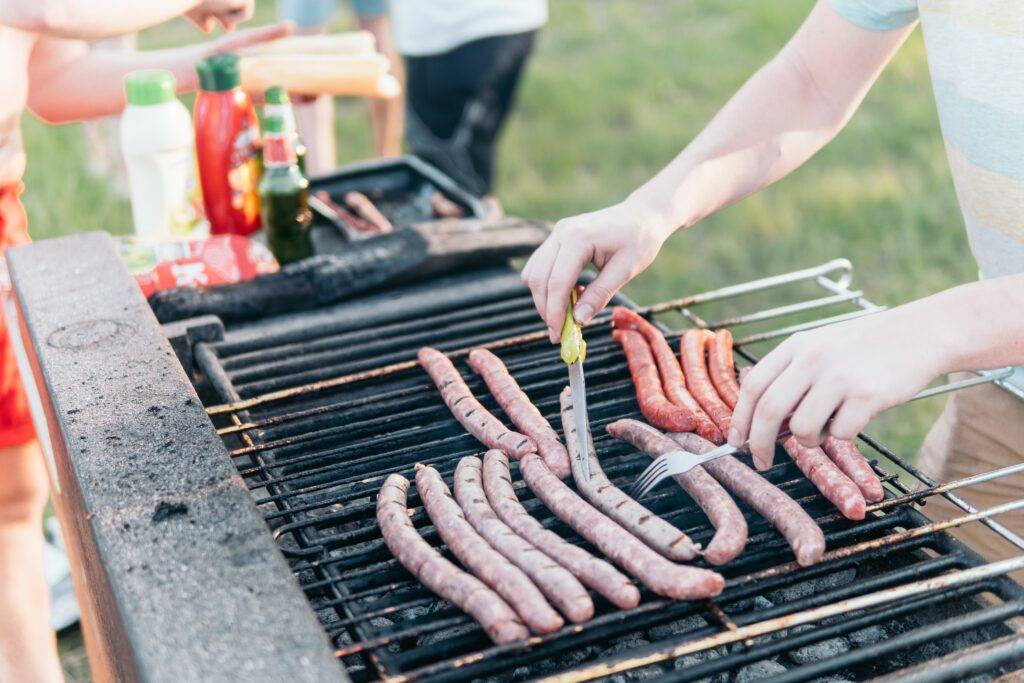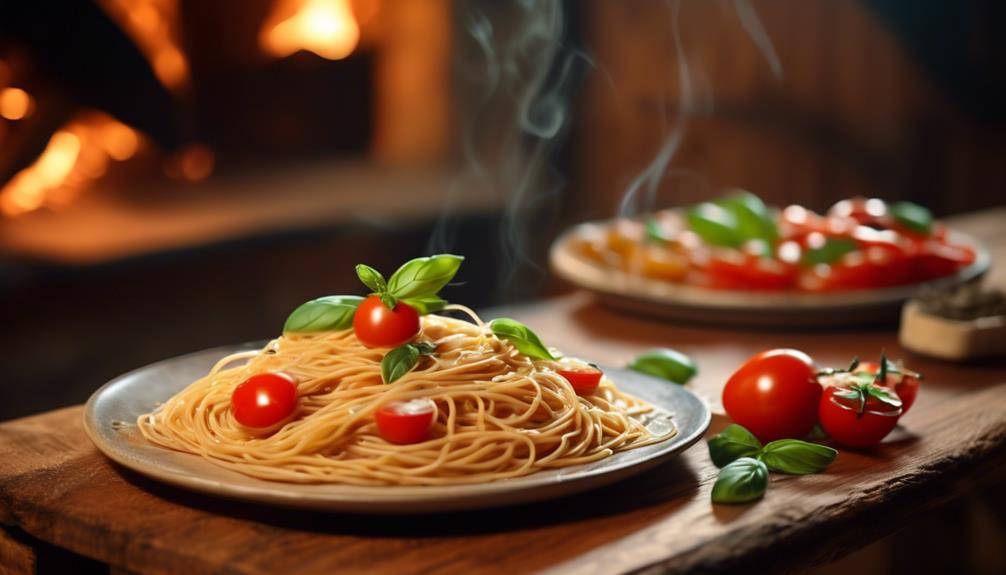Perfecting Sausages: A How-To Grilling Guide 5 Easy Steps

Are your sausages always turning out less than perfect on the grill? Look no further! Perfecting Sausages: A How-To Grilling Guide is here to help you become a grilling master. Have you ever wondered how to choose the perfect sausage or how to properly season and marinate it? Well, wonder no more! In this guide, we will walk you through all the steps to ensure your sausages are grilled to perfection every time. From preheating the grill to monitoring the internal temperature, we’ve got you covered. Say goodbye to common grilling mistakes and hello to juicy, flavorful sausages. So grab your tongs and let’s get grilling!
Choosing the Perfect Sausage
When choosing the perfect sausage for grilling, start by considering your personal preferences and the occasion. Sausages come in various casing types, such as natural casings made from animal intestines and artificial casings made from collagen or cellulose. Natural casings offer a traditional and authentic experience, as they provide a satisfying snap when bitten into. Artificial casings, on the other hand, are more uniform in size and shape, making them easier to handle on the grill.
When it comes to cooking methods, there are a few options that can help you achieve the best results. Grilling sausages directly over medium-high heat is a popular choice, as it imparts a smoky flavor and creates those characteristic grill marks. However, it’s important to monitor the heat closely to prevent the casings from bursting. Another method is parboiling the sausages before grilling. This involves simmering them in a pot of water until partially cooked, which helps to ensure they are evenly cooked throughout. After parboiling, you can transfer the sausages to the grill to give them that final char and crispiness.
For those who prefer a healthier alternative, consider grilling sausages on a skewer or using a grill basket. This allows excess fat to drip away, resulting in a leaner and lighter option. Additionally, you can experiment with different flavors and seasonings by marinating the sausages prior to grilling. This can enhance the taste and add a touch of complexity to your dish.
Preparing the Grill for Sausage Cooking
Before you start grilling your sausages, it’s important to prepare the grill properly. Two key points to consider are heat distribution techniques and the proper grilling temperature. Ensuring that the heat is evenly distributed across the grill will help cook your sausages more evenly and prevent any hot spots. Additionally, knowing the correct grilling temperature for sausages will help you achieve that perfect balance between a crispy exterior and a juicy interior.
Heat Distribution Techniques
To achieve optimal heat distribution on your grill for cooking sausages, start by evenly distributing the charcoal or arranging the burners on your gas grill. This step is crucial in maximizing tenderness and achieving a crispy exterior on your sausages.
For charcoal grills, arrange the briquettes in a single layer, ensuring they cover the entire bottom of the grill. This will provide even heat distribution and prevent hot spots. If you’re using a gas grill, turn on all the burners and preheat the grill for about 10-15 minutes. Once preheated, adjust the burners to create different heat zones. This will allow you to sear the sausages over high heat and then move them to a cooler zone for indirect cooking. By following these heat distribution techniques, you’ll ensure that your sausages are perfectly cooked every time.
Proper Grilling Temperature
Start by ensuring that your grill is heated to the proper temperature for cooking sausages. This is a crucial step in achieving perfectly grilled sausages with juicy interiors and crispy exteriors. Here are some grilling tips to help you achieve the ideal temperature for sausage cooking:
- Preheat the grill: Allow the grill to preheat for at least 10-15 minutes before placing the sausages on the grate. This will ensure that the grill reaches the desired temperature evenly.
- Medium heat: Set the grill to medium heat, which is around 350-400°F (175-205°C). This temperature range allows the sausages to cook through without burning the exterior.
- Use indirect heat: If you’re using a charcoal grill, push the hot coals to one side and place the sausages on the cooler side of the grill. This indirect heat method prevents flare-ups and helps cook the sausages evenly.
- Monitor cooking time: Cook the sausages for about 15-20 minutes, turning occasionally, until they reach an internal temperature of 160°F (71°C). Use a meat thermometer to ensure accurate cooking.
Seasoning and Marinating Your Sausages
Enhance the flavor of your sausages by seasoning and marinating them with a double preposition. Seasoning and marinating your sausages can take them from ordinary to extraordinary, adding depth and complexity to every bite. Whether you’re grilling bratwurst, Italian sausages, or chorizo, the right combination of seasonings and marinades can elevate your sausages to a whole new level of deliciousness.
When it comes to seasoning your sausages, there are a few key tips to keep in mind. First, make sure to generously season your sausages with salt and pepper before cooking. This will help enhance the natural flavors of the meat and create a tasty crust when grilled. Additionally, consider adding herbs and spices such as paprika, garlic powder, or fennel seeds to further enhance the flavor profile of your sausages.
Marinating your sausages can also add a delicious twist to your grilling experience. The marinade not only infuses the meat with flavor but also helps to tenderize it, resulting in juicy and flavorful sausages. There are countless marinade recipes available, ranging from simple combinations of olive oil, lemon juice, and herbs to more complex mixtures that incorporate soy sauce, Worcestershire sauce, and spices. Whichever marinade you choose, be sure to allow your sausages to marinate for at least 30 minutes, or even overnight, to maximize the flavor infusion.
Properly Preheating the Grill
Before you begin grilling, make sure that the grill is properly preheated. This step is crucial for achieving perfectly cooked sausages with a delicious charred exterior. Here are four important things to keep in mind when preheating your grill:
- Clean and maintain your grill: Before every grilling session, it’s essential to clean your grill grates thoroughly. Use a grill brush to remove any leftover food particles or debris from previous cooking sessions. This not only prevents the buildup of unwanted flavors but also helps promote even heat distribution during preheating.
- Check for propane or charcoal: If you’re using a gas grill, ensure that you have enough propane in the tank to maintain a consistent flame. For charcoal grills, make sure you have enough briquettes or lump charcoal to create an even layer of heat. Having an adequate fuel supply is essential for achieving the desired cooking temperature.
- Preheat on high for at least 10-15 minutes: Turn on your grill and set it to the highest heat setting. Allow it to preheat for at least 10-15 minutes with the lid closed. This step ensures that the grill grates reach their optimal cooking temperature, which helps prevent grill flare-ups and ensures even cooking.
- Oil the grates: After preheating, use tongs and a folded paper towel soaked in vegetable oil to lightly oil the grill grates. This prevents the sausages from sticking to the grates and helps create those beautiful grill marks.
Grilling Techniques for Different Sausage Varieties
When it comes to grilling sausages, it’s important to understand the optimal cooking temperatures for different varieties. For example, bratwursts are best cooked at a medium heat to ensure a crispy exterior and juicy interior. On the other hand, Italian sausages benefit from a higher heat to develop a charred and flavorful crust. Additionally, consider flavor pairings to enhance the taste of your sausages, such as serving spicy sausages with tangy mustard or pairing smoky sausages with sweet barbecue sauce. Mastering these grilling techniques will elevate your sausage game to the next level.
Optimal Cooking Temperatures
To achieve perfectly grilled sausages, adjust the cooking temperatures based on the specific variety of sausage you are grilling. Different sausages require different cooking temperatures to ensure optimal flavor and texture. Here are some recommended cooking temperatures for popular sausage types:
- Bratwurst: Cook at medium-high heat (around 375°F) for about 10-12 minutes, turning occasionally until the internal temperature reaches 160°F. This will give you a juicy and well-cooked bratwurst.
- Italian Sausage: Grill at medium heat (around 350°F) for approximately 15-20 minutes, turning occasionally, until the internal temperature reaches 160°F. This will result in a perfectly browned and flavorful Italian sausage.
- Chorizo: Cook at medium-high heat (around 375°F) for about 8-10 minutes, turning occasionally until the internal temperature reaches 160°F. This will ensure a nicely charred exterior and a fully cooked chorizo.
- Breakfast Sausage: Grill at medium heat (around 350°F) for approximately 10-12 minutes, turning occasionally, until the internal temperature reaches 160°F. This will give you a delicious and evenly cooked breakfast sausage.
Flavor Pairings for Sausages
To enhance the flavor of your sausages while grilling, consider flavor pairings that complement the different varieties of sausages. When it comes to sausage stuffing ideas, the options are endless. For a classic pairing, try stuffing your sausages with caramelized onions and melted cheese. The sweetness of the onions and the richness of the cheese will perfectly complement the savory flavors of the sausage. If you’re feeling more adventurous, consider stuffing your sausages with jalapenos and cream cheese for a spicy and creamy twist.
When it comes to sausage and beer pairings, it’s all about finding the right balance. For lighter sausages like bratwurst, a crisp and refreshing pilsner or lager is a great choice. The clean flavors of the beer will cleanse your palate after each bite. For heartier sausages like chorizo, a malty and slightly hoppy amber ale or brown ale will provide a nice contrast to the bold and spicy flavors of the sausage. Remember, the key to a successful sausage and beer pairing is to find flavors that complement and enhance each other, creating a harmonious and enjoyable dining experience.
Monitoring the Internal Temperature of Sausages
Start by using a meat thermometer to regularly check the internal temperature of your sausages while grilling. This is an essential step in ensuring that your sausages are cooked to perfection and safe to eat. Here are four important things to know about monitoring the internal temperature of sausages:
- Measuring Doneness: The internal temperature of sausages is the most reliable way to determine their doneness. For pork, the safe minimum internal temperature is 160°F (71°C), while for poultry sausages, it is 165°F (74°C). By using a meat thermometer, you can accurately measure the temperature and avoid undercooking or overcooking your sausages.
- Types of Meat Thermometers: There are two main types of meat thermometers that you can use to monitor the internal temperature of your sausages. Instant-read thermometers provide a quick and accurate reading within seconds, while leave-in thermometers can be inserted into the sausages and left in place throughout the grilling process, allowing you to monitor the temperature continuously.
- Proper Placement: When using a meat thermometer, it is important to insert the probe into the thickest part of the sausage without touching the bone or the casing. This will give you the most accurate reading of the internal temperature.
- Checking Multiple Sausages: If you are grilling multiple sausages at once, it is crucial to check the internal temperature of each one individually. This is because sausages may cook at different rates, and you want to make sure that each sausage reaches the proper internal temperature for safe consumption.
Avoiding Common Grilling Mistakes
While monitoring the internal temperature of your sausages is crucial, it is also important to avoid common grilling mistakes. To ensure grilling success and perfectly cooked sausages, it is essential to be aware of these common pitfalls and take preventive measures.
One common grilling mistake is starting with a dirty grill. Before cooking your sausages, make sure to clean the grill grates thoroughly. Use a wire brush to remove any leftover food particles or residue from previous grilling sessions. This will not only prevent your sausages from sticking to the grates but also enhance the flavor of the final product.
Another mistake to avoid is overcrowding the grill. It can be tempting to cook as many sausages as possible at once, but overcrowding leads to uneven cooking. Leave enough space between each sausage to allow for proper heat circulation and ensure even cooking throughout. This will result in juicy and evenly cooked sausages.
It is crucial to resist the urge to constantly flip the sausages. Flipping them too frequently can lead to loss of juices and affect the overall taste and texture. Instead, let the sausages cook undisturbed for a few minutes on each side before flipping them once or twice to achieve a nicely charred exterior.
Lastly, do not rush the cooking process. Sausages require a moderate heat and should be cooked slowly and evenly. Cooking them over high heat may cause the sausages to burn on the outside while remaining undercooked on the inside. Aim for a medium heat and allow the sausages to cook slowly until they reach the desired internal temperature.
Resting and Slicing Sausages for Serving
Once your sausages have finished cooking, allow them to rest for a few minutes before slicing for serving. Resting the sausages is an essential step that allows the juices to redistribute throughout the meat, resulting in a more flavorful and tender bite. Here are some resting techniques and presentation ideas to ensure your sausages are served at their best:
- Tent with foil: After removing the sausages from the grill, loosely tent them with foil. This will help retain heat and keep the sausages warm while they rest. It also allows any residual steam to escape, preventing the sausages from becoming soggy.
- Resting time: The resting time for sausages depends on their size and type. As a general rule, smaller sausages require 5-10 minutes of resting time, while larger ones may need up to 15 minutes. Use this time to prepare your side dishes or set the table.
- Slicing technique: Once the sausages have rested, it’s time to slice them for serving. For traditional sausages, such as bratwurst or Italian sausage, slice them diagonally into bite-sized pieces. This not only enhances the presentation but also makes them easier to pick up with a fork or toothpick.
- Presentation ideas: Get creative with how you present your sliced sausages. Serve them on a platter with a variety of dipping sauces, such as mustard, barbecue sauce, or aioli. You can also incorporate them into sandwiches or sliders for a more substantial meal. Garnish with fresh herbs or sprinkle with grated cheese for an added touch of flavor and visual appeal.
Serving Suggestions and Delicious Accompaniments
Enhance your sausage grilling experience with delectable accompaniments. As you savor the juicy and flavorful sausages hot off the grill, consider adding a variety of creative toppings and serving them alongside grilled vegetables. Not only will these additions elevate the taste profile of your meal, but they will also provide a well-rounded and satisfying dining experience.
When it comes to grilling vegetables, there are several techniques that can help bring out their natural flavors. One method is to brush the vegetables with olive oil and sprinkle them with salt and pepper before grilling. This will enhance their taste and prevent them from sticking to the grill. Another technique is to marinate the vegetables in a mixture of herbs, garlic, and olive oil before grilling. This will infuse them with extra flavor and tenderness. Additionally, using a grill basket or skewers can make it easier to handle and flip the vegetables while ensuring even cooking.
Now, let’s talk about creative sausage toppings. While classic condiments like mustard and ketchup are always a safe bet, there are plenty of other options to explore. Consider topping your sausages with caramelized onions, sautéed peppers, or a tangy slaw. These toppings add a burst of flavor and texture that complements the savory taste of the sausages perfectly. For a Mediterranean twist, try topping your sausages with tzatziki sauce, feta cheese, and diced tomatoes. This combination will transport your taste buds to the sunny shores of Greece.
Perfecting Sausages; Frequently Asked Questions
How Long Should I Let the Sausages Rest Before Slicing and Serving?
You should let the sausages rest for a few minutes before slicing and serving. This allows the juices to redistribute and the flavors to settle, resulting in a more delicious and tender bite.
Can I Use a Gas Grill Instead of a Charcoal Grill for Grilling Sausages?
Yes, you can definitely use a gas grill for grilling sausages. Gas grills offer the benefits of convenience, quick heat-up time, and easy temperature control. The charcoal vs. gas debate ultimately comes down to personal preference.
What Is the Best Way to Clean the Grill After Cooking Sausages?
To clean your grill after cooking sausages, the best way is to first let it cool down. Then, use a grill brush to remove any leftover grease and food particles. Regular grill maintenance will ensure its longevity.
Can I Freeze Leftover Cooked Sausages?
Yes, you can freeze leftover cooked sausages. Wrap them tightly in plastic wrap or place them in a freezer bag. When reheating, defrost in the fridge overnight and then cook them in a skillet or microwave.
Are There Any Vegetarian or Plant-Based Sausage Options Available for Grilling?
Yes, there are plenty of vegetarian or plant-based sausage options available for grilling. These options provide a variety of flavors and can be cooked using similar grilling techniques as traditional sausages.
Conclusion
In conclusion, mastering the art of grilling sausages requires attention to detail and proper technique. By choosing the perfect sausage, preparing the grill correctly, seasoning and marinating to enhance flavors, preheating the grill adequately, using specific grilling techniques for different sausage varieties, monitoring the internal temperature, avoiding common grilling mistakes, and resting and slicing the sausages properly, you can achieve perfectly cooked sausages every time. Serve them with your favorite accompaniments and enjoy the delicious flavors that result from your grilling expertise.








